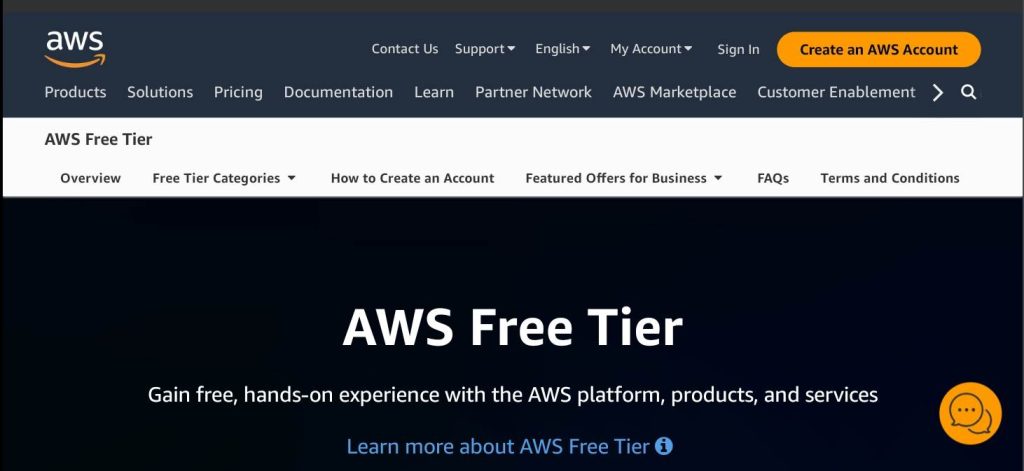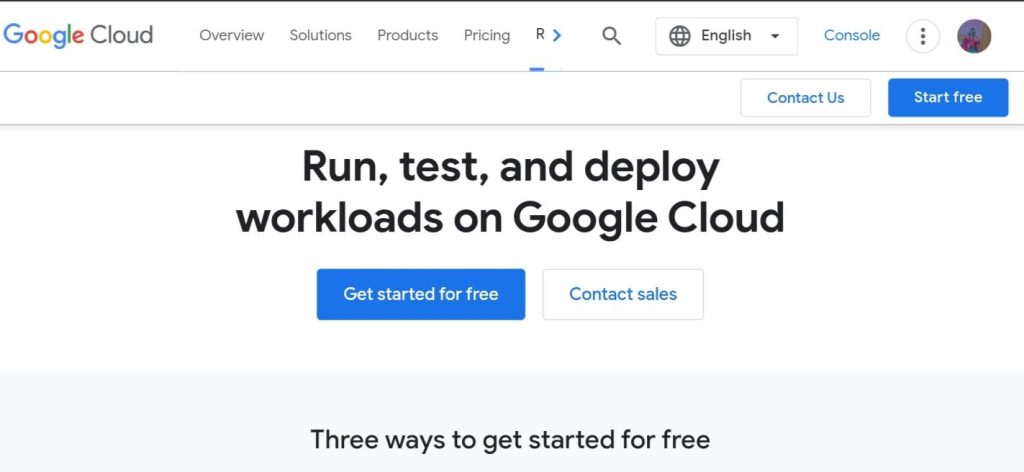
In today’s era, Amazon Web Services (AWS) is currently dominating infrastructure which includes scalable storage, server, networking, cybersecurity solutions, and mobile development. On the other hand, Microsoft Azure offers some of the most efficient and scalable software solutions. Google Cloud Platform allows easy interaction with others and provides high-end big data analytics solutions.
With Cloud Computing that is flooded with various cloud providers, Azure, AWS, and Google Cloud Platform stand out as the best 3 cloud providers. So, choosing which one is best is a complex choice, right? In this article, you will get all the answers you are searching for!
About Cloud Computing?
Cloud computing includes the computing services like servers, databases, storage, networking, analytics, software, and intelligence by the cloud. It provides fast flexible resources, innovation, and economies of scale. It offers a pay-as-you-go feature that helps you run infrastructure more efficiently, cut operating expenses, and scale as business needs change.
Benefits of Cloud Computing
The cloud offers various options for serving, storing, and processing data. There are following benefits of cloud computing such as:
1. Reduced Infrastructure Cost
Cloud computing reduces infrastructure maintenance by simply allowing developers to focus on more critical business objectives and removing the need for physical storage. The resources offer many services to consumers simultaneously by providing location independence.
2. Increased Availability
With cloud computing, IT resources are just one click away. This on-demand availability allows users to reduce the time it takes for IT teams to access those resources. Eventually, it leads to a dramatic boost in organizational agility because the time and cost to experiment and innovate are minimized.
3. Scalability
Cloud computing services have the capacity to scale elastically. It permits businesses to enjoy greater agility by receiving the exact resources they require: such as storage, bandwidth, and computing power. Moreover, users get IT resources whenever they need them and from the right place in cloud language.
Overview of these Cloud Providers
1. Amazon Web Services (AWS)

Amazon Web Services (AWS) offers cloud computing resources and services that may develop applications in a few minutes with a feature pay-as-you-go price. With AWS you can rent a server to configure, connect to, protect, and run just how physical servers work. Some of the popular users of Amazon Web Services (AWS) are Netflix, Coinbase, Coca-Cola, Coursera, Expedia, Formula 1, Intuit, Airbnb, Lyft and, Food and Drug Administration (FDA), etc.
Benefits of AWS
1. Most used cloud services infrastructure today
2. Largest network of data centers
3 It provides superior cloud services experience
4. User-friendly setup
5. Developer-friendly
6. Extensive data backup
Limitations of AWS
1. Potential overwhelm
2. Complex pricing
3. Limited on-premises and hybrid capabilities
4. Costly support
2. Microsoft Azure

Microsoft Azure is one of the public cloud platforms that offers Platform as a Service (PaaS), Infrastructure as a Service (IaaS), and Software as a Service (SaaS) solutions for analytics, storage, virtual computing, networking, and many other services. It can also improve or replace your on-premise servers. Some of the popular users of Microsoft Azure are Bosch, Audi, Starbucks, ASOS, HSBC, Walmart, Walgreens, 3M, FedEx, HP, Renault and Mitsubishi Electric.
Benefits of Azure
1. Superior enterprise support
2. Huge network of global data centers
3. Integrate seamlessly with other Microsoft applications
4. Use existing Microsoft licenses
5. Cost-effective
6. Extensive support for Linux OS
Limitations of Azure
1. Complex pricing
2. Basic cost management tools
3. Not SMB-friendly
3. Google Cloud Platform

Google Cloud Platform is a cloud computing service founded by Google in 2008. It provides enterprises all around the world with Platform as a service (PaaS), Infrastructure as a service (IaaS), and Software as a service (SaaS). It is primarily a service for building and maintaining original applications that can be published from its hyper-scale data centers. Some of the popular users of Google Cloud Platform (GCP) are Toyota, Twitter, Paypal, Spotify, Equifax, Nintendo, The Home Depot, Target, and UPS.
Benefits of GCP
1. Better price/performance
2. Exceptional containerization support
3. Suitable for SMBs
4. Superior open-source support
5. Seamless integration with Workspace
6. Support for multi-cloud deployments
Limitations of GCP
1. Limited number of cloud servers and data centers
2. Limited enterprise solutions support.
AWS, Azure, and GCP: 5 Major Difference Between these 3 Big Tools of Cloud Computing
1. Availability Zones
AWS: Amazon Web Services cloud service infrastructure spans 99 Availability Zones across 31 regions.
Azure: Microsoft Azure has a global network of over 160 data centers, ensuring high availability as well. Each Azure Region provides 3 separate Availability Zones, each with cooling, independent power, and networking infrastructure.
GCP: GCP also offers cloud services through the Regions and Zones concept. There are a total of 112 Zones, 37 Regions, and 176 Edge locations.
2. Services
AWS: AWS provides over 235+ fully featured cloud services and products most by any CSP. The users can organize their services and products in categories like computing, networking, storage, serverless, security/compliance/identity, databases, analytics, management, and databases.
Azure: Azure Cloud also provides a variety of cloud services offering multiple products under each cloud service category.
GCP: On the other hand, GCP seems to provide fewer services and products like over 100.
3. Open-source support
AWS: It has a history of working with open-source communities. From Apache Kafka to MySQL to Linux to OpenTelemetry, it has supported all notable projects. Moreover, it allows developers to switch to open-source software from proprietary. It has also open-sourced projects like Babelfish( PostgreSQL) and .NET Porting Assistant.
Azure: Although the Azure cloud platform is also supporting open-source projects, they are still handled by third parties like Terraform, RedHat, and Databricks.
GCP: Google’s Open Source projects are Kubernetes (container orchestration), TensorFlow (machine learning), Istio (service mesh), and Go (programming language). Most of it is donated to the Cloud Native Computing Foundation (CNCF). If you intend to leverage or integrate l platforms or tools like these, then GCP can be the best choice.
4. Hybrid and multi-cloud options
Businesses get most of the benefits by gathering a mix of storage, computing, and services environments (on-premises infrastructure, a public cloud, and private cloud services,). There is explicit coordination among certain platforms with the hybrid cloud.
AWS hybrid and multi-cloud: These contain Amazon ECS Anywhere, AWS Snowball, AWS Snowcone, AWS Outposts, AWS Local Zones, VMware Cloud on AWS, AWS Wavelength, Amazon EKS Anywhere and AWS Snowcone.
Azure hybrid And multi-cloud: These contain Azure Arc, Azure Backup, Azure Active Directory, Azure Security Center, Azure Blob Storage, Azure Stack, and Azure Centinel.
GCP hybrid and multi-cloud: These include Anthos, Traffic Director, Looker, Cloud Build, Operations, and Cloud Run for Anthos.
5. Support and pricing
Azure, GCP, and AWS all of them offer similar pricing systems. They all use a pay-as-you-go model, with ranging prices. It depends on the service you opt for, whether you use the resources on-demand or on a reserved basis.
Conclusion
In conclusion, AWS, Azure, and GCP are well-known and popular cloud providers. Each offers unique strengths. AWS offers scalability and global reach, while Azure excels in security and integration, on the other hand, GCP stands out in machine learning and data management.
Choosing the right provider depends on your specific needs such as cost and performance. If you are small small business or startup and don’t want to spend a hectic amount on these tools, then worry no more we are here! Perimattic offers you services that are cost-effective with a variety of products that suit your growing business’s needs.



